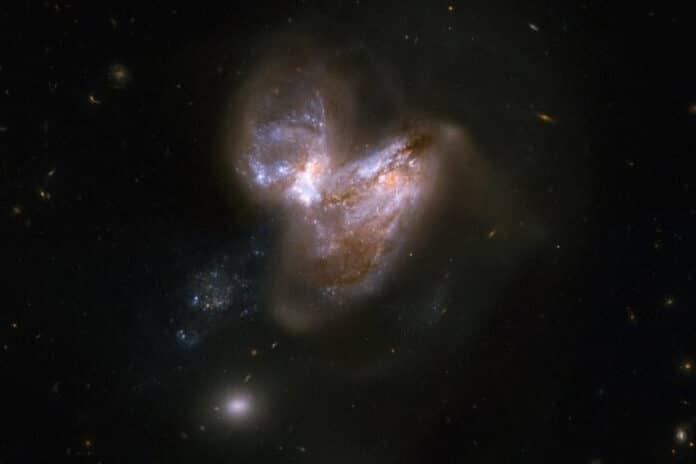A black hole that is rapidly expanding has been found in one of the most extreme galaxies.
The discovery provides new clues on the formation of the very first supermassive black holes.
Scientists are still puzzled by the formation of supermassive black holes, which are present in almost every large galaxy. Although some of these objects were detected in the early Universe, their origin remains a mystery. Because the light from these sources takes a long time to reach us, we observe them as they existed in the past. Recently, astronomers used the Atacama Large Millimeter Array (ALMA), a radio observatory in Chile, to discover a new type of primordial black hole in one of the most extreme galaxies known to exist in the early Universe. This rapidly expanding black hole was identified in the galaxy COS-87259.

The newly discovered supermassive black hole resides in the galaxy COS-87259, which is an extreme galaxy, producing stars at a rate that is 1000 times greater than that of our Milky Way and containing over a billion solar masses of interstellar dust. The galaxy’s brightness is a result of the rapid burst of star formation and the expanding supermassive black hole situated at its core. Researchers at the University of Texas and the University of Arizona discovered the black hole, which is mostly concealed by cosmic dust, causing it to emit nearly all of its light in the mid-infrared range of the electromagnetic spectrum. The black hole also produced a powerful jet of material that moved at nearly the speed of light through the host galaxy.
The discovery of COS-87259 and its supermassive black hole in a small patch of the sky has surprised scientists, who now speculate that there could be thousands of similar sources in the early universe. This finding raises questions about the prevalence and emergence of highly early supermassive black holes and their associated galaxies. The lead author of the study, Ryan Endsley, suggests that early supermassive black holes may have been heavily obscured by dust due to intense star formation activity. The discovery provides direct observational evidence to support this scenario and could lead to a better understanding of how billion solar mass black holes and the most massive galaxies evolved in the early universe.
Journal Reference:
Ryan Endsley, Daniel Stark, et al. ALMA confirmation of an obscured hyperluminous radio-loud AGN at z = 6.853 associated with a dusty starburst in the 1.5 deg2 COSMOS field. Monthly Notices of the Royal Astronomical Society. DOI: 10.1093/mnras/stad266
Do not forget to share your opinion with us to provide you with the best posts !



0 Comments